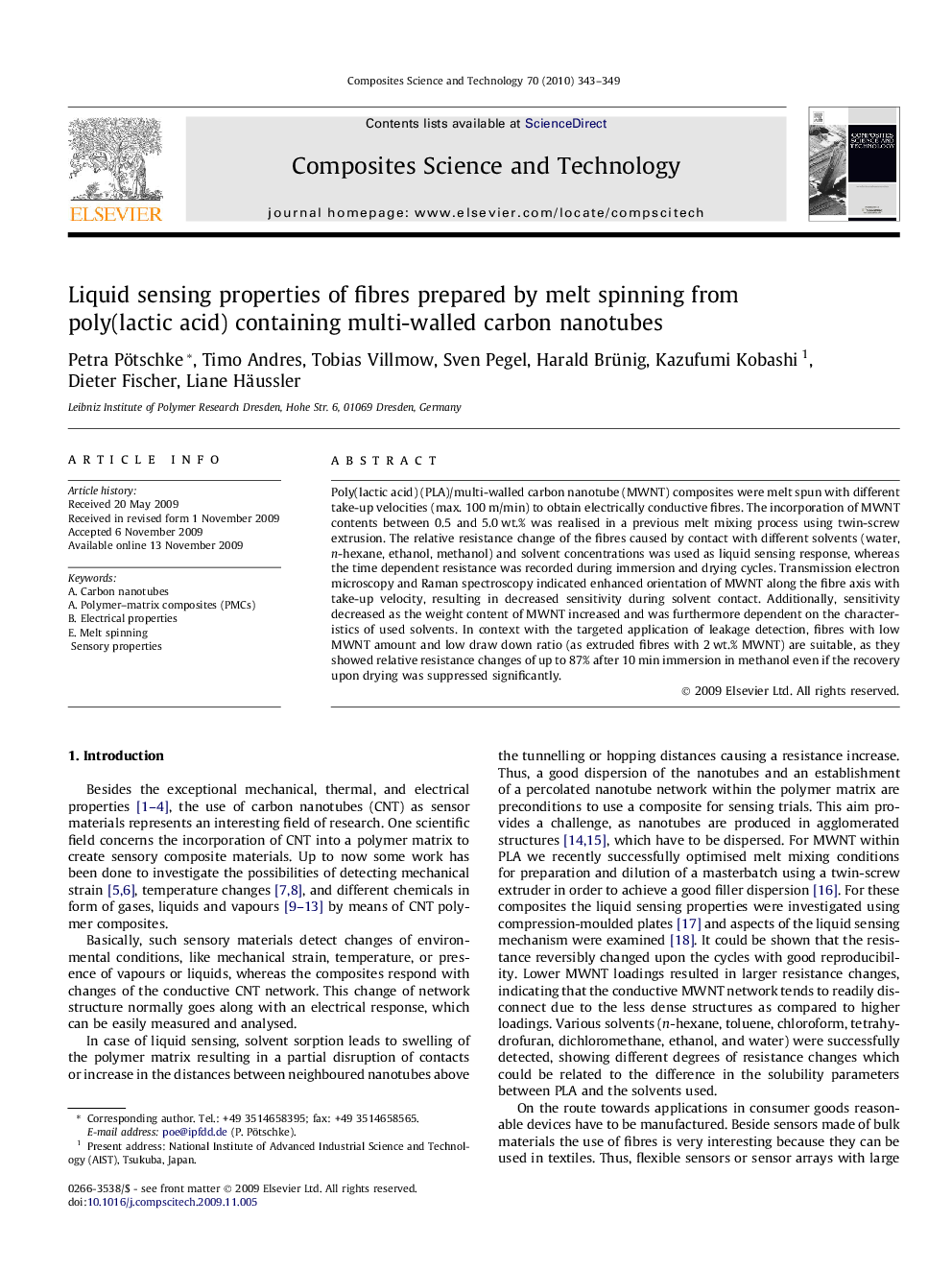| Article ID | Journal | Published Year | Pages | File Type |
|---|---|---|---|---|
| 821734 | Composites Science and Technology | 2010 | 7 Pages |
Poly(lactic acid) (PLA)/multi-walled carbon nanotube (MWNT) composites were melt spun with different take-up velocities (max. 100 m/min) to obtain electrically conductive fibres. The incorporation of MWNT contents between 0.5 and 5.0 wt.% was realised in a previous melt mixing process using twin-screw extrusion. The relative resistance change of the fibres caused by contact with different solvents (water, n-hexane, ethanol, methanol) and solvent concentrations was used as liquid sensing response, whereas the time dependent resistance was recorded during immersion and drying cycles. Transmission electron microscopy and Raman spectroscopy indicated enhanced orientation of MWNT along the fibre axis with take-up velocity, resulting in decreased sensitivity during solvent contact. Additionally, sensitivity decreased as the weight content of MWNT increased and was furthermore dependent on the characteristics of used solvents. In context with the targeted application of leakage detection, fibres with low MWNT amount and low draw down ratio (as extruded fibres with 2 wt.% MWNT) are suitable, as they showed relative resistance changes of up to 87% after 10 min immersion in methanol even if the recovery upon drying was suppressed significantly.
